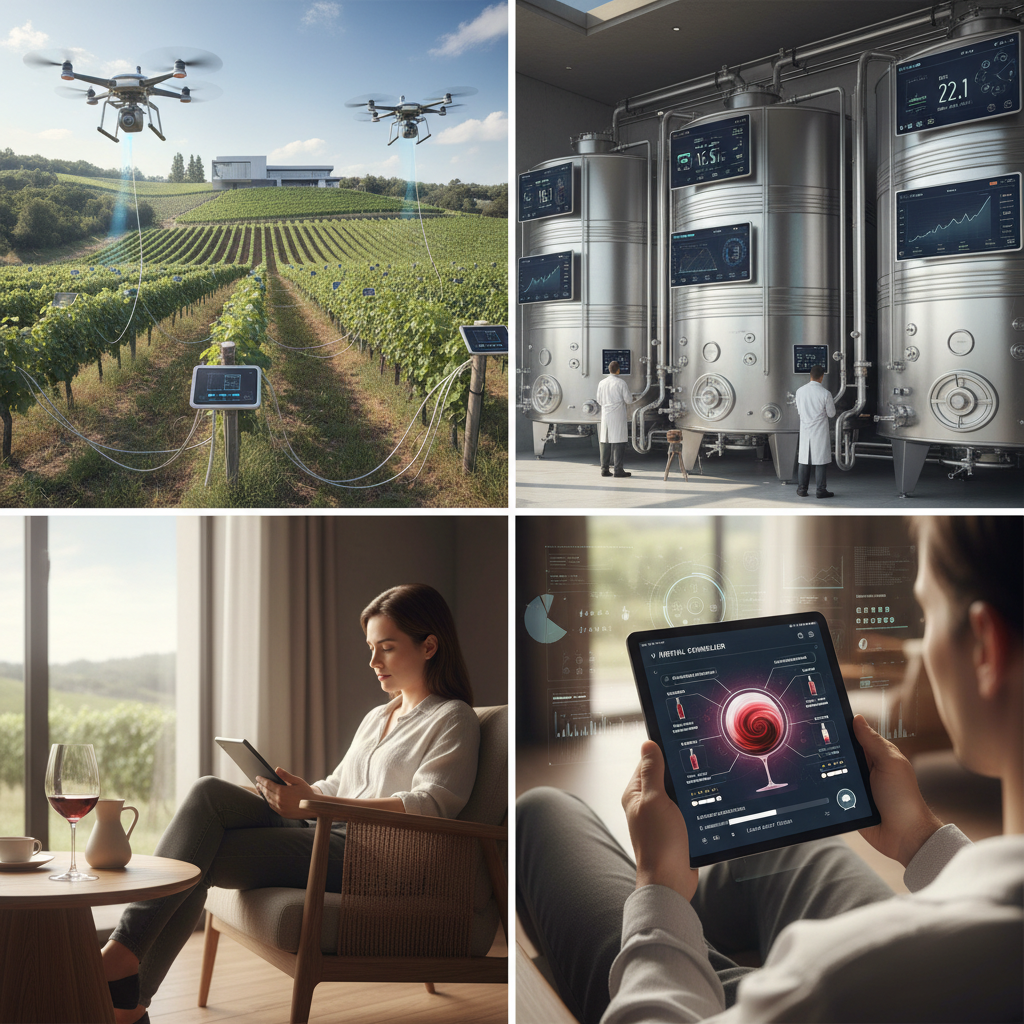
AI in Viticulture, Winemaking, and Wine Education: Transforming the Industry
The integration of artificial intelligence into the wine industry is transforming viticulture, winemaking, and consumer interaction.
AI optimizes vineyard management by analyzing environmental data to improve vine health and yield.
In winemaking, AI monitors fermentation to ensure consistency and quality.
Personalized recommendations and virtual sommeliers tailor wine choices to individual tastes.
AI-enabled educational tools make wine knowledge more accessible and engaging for all.
This fusion of tradition and technology is reshaping wine appreciation and production for a modern audience.
Summary
Frequently Asked Questions
Q: How to enjoy wine without deep knowledge
A: You can enjoy wine without deep knowledge by focusing on what tastes good to you rather than technical details. Start with wines that are light and approachable, like a fruity red or a crisp white. Pay attention to the flavors and aromas you personally enjoy, and pair wine with your favorite foods to enhance the experience. Remember, enjoying wine is about pleasure, so trust your own preferences instead of wine rules.
Q: Books about wine and AI
A: Books about wine and AI explore how artificial intelligence is transforming the wine industry, from vineyard management to wine recommendation systems. Titles often cover topics like machine learning for predicting grape quality, AI-driven tasting notes, and the use of data analytics to improve production. Examples include works that merge oenology with technology, providing insights into the future of wine with AI innovations.
Q: Wine tasting guides for beginners
A: A wine tasting guide for beginners typically includes understanding the five basic steps: look, swirl, smell, taste, and savor. Start by observing the wine's color and clarity, then gently swirl it in the glass to release aromas. Take a deep sniff to identify different scents such as fruity, floral, or earthy notes. When tasting, take a small sip, letting the wine spread across your palate to detect flavors, acidity, sweetness, and tannins. Finally, consider the wine's finish and your overall impression to appreciate its complexity.
Q: Impact of artificial intelligence on wine industry
A: Artificial intelligence (AI) is transforming the wine industry by improving vineyard management, optimizing production, and enhancing marketing strategies. AI-powered tools analyze data on weather, soil conditions, and grape health to aid growers in making precise decisions that increase yield and quality. In winemaking, AI helps control fermentation processes and predict flavor profiles, ensuring consistent product quality. Additionally, AI supports personalized recommendations for consumers, improving their wine selection experience and boosting sales.
Q: Best wine books written recently
A: Some of the best recent wine books include 'Wine Folly: Magnum Edition' by Madeline Puckette and Justin Hammack, which offers a comprehensive and visually engaging guide to wine basics and tasting. 'Drink What You Like' by Andrew Dornenburg and Karen Page encourages readers to explore personal wine preferences beyond traditional rules. Another notable book is 'Natural Wine: An Introduction to Organic and Biodynamic Wines Made Naturally' by Isabelle Legeron, which delves into the growing trend of natural winemaking. These books provide fresh perspectives and up-to-date information for both novice and experienced wine enthusiasts.
Key Entities
Wine Taster’s Guide: The Wine Taster’s Guide is a resource designed to help enthusiasts identify flavors and aromas in different wines, improving their tasting skills. It often includes tasting notes, tips on wine characteristics, and guidance on pairing.
Wine Taster’s Journal: The Wine Taster’s Journal is a publication or tool used for recording and reflecting on wine tasting experiences. It helps tasters track wines they have sampled and note unique qualities or preferences for future reference.
How to WIN at Wine: How to WIN at Wine is a book authored by Sara Schneider that offers advice on selecting, tasting, and pairing wines confidently. The guide simplifies wine knowledge for readers seeking to enhance their enjoyment and understanding.
The Algorithm and the Vine: The Algorithm and the Vine explores the intersection of technology and wine, focusing on how algorithms influence wine selection and marketing. It examines data-driven approaches to understanding consumer preferences in the wine industry.
External articles
- Book - AI for Wine
- From Grapes to Glass: The AI Winemaker's Palette
- How AI Is Transforming The Ancient Art Of Fine Winemaking
Articles in same category
- Tenute Tomasella Winery: Tradition and Sustainable Wines in Veneto & Friuli
- Accessible Wine Education for Beginners: Top Books to Build Confidence
- Josetta Saffirio: Sustainable Barolo Wine Innovation in Piedmont
YouTube Video
Title: Wine Tasting REVOLUTIONIZED Old World Meets Future Tech!
URL: https://www.youtube.com/shorts/06PDs2gMIqs
Dining
